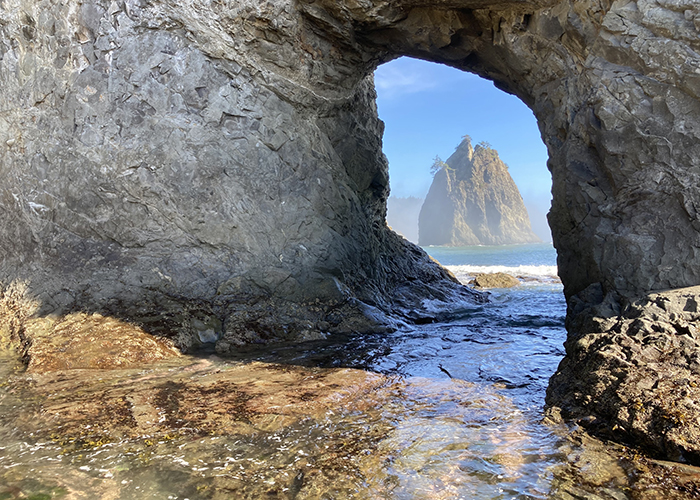 More 2021 Adventures |
Port Angeles, WA → Mora, WA → Port Angeles, WA 201.0 mi (323.5 km) |
 More 2021 Adventures |
It’s a gold medal day, everyone!
I’ve been in Washington State for a couple of days for my good friend’s wedding, but today, I’ve really got something to blog about! My pal, Dan, and I are exploring UNESCO-honored Olympic National Park today, which has glacier-capped peaks, lush rainforests, and the longest undeveloped coastline in the lower 48! With several endangered species calling it home, like the northern spotted owl, marbled murrelet, and bull trout, this promised to be one wild place to explore!
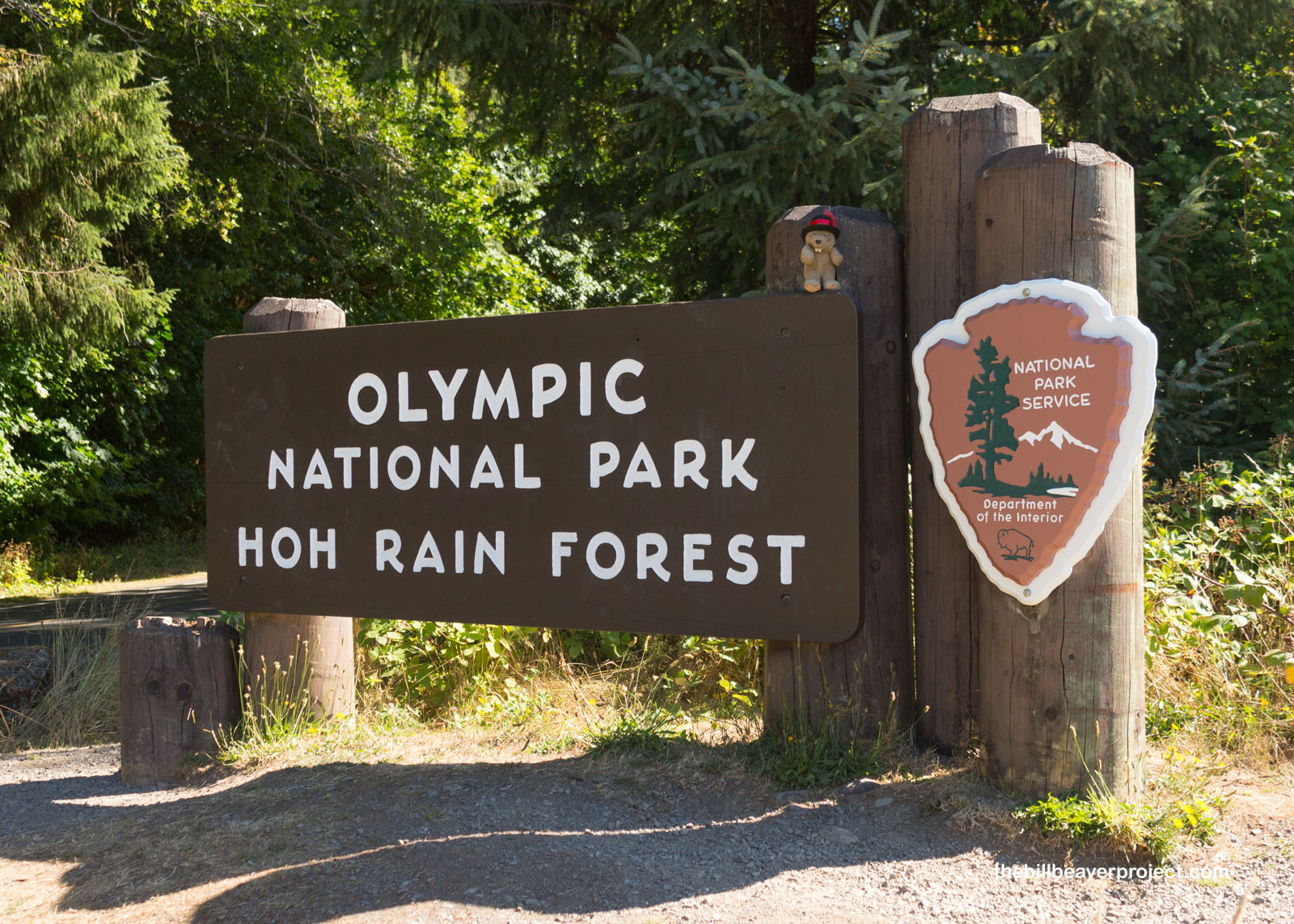 |
And boy was that the wrong assumption to make at our first stop! The Hoh Rainforest, whose name is shrouded in mystery, was swarming with people! In fact, there were way more people than the parking lot could hold, which made a long line at the toll booth to get into this unit! Faced with last month’s record-setting heat wave (110°F on the Olympic Peninsula in June), a lack of rainfall, and a mysterious sword fern die-off, this ecosystem is already under intense strain. The most we could hope for today was to see some mosses left on the trail named after them!
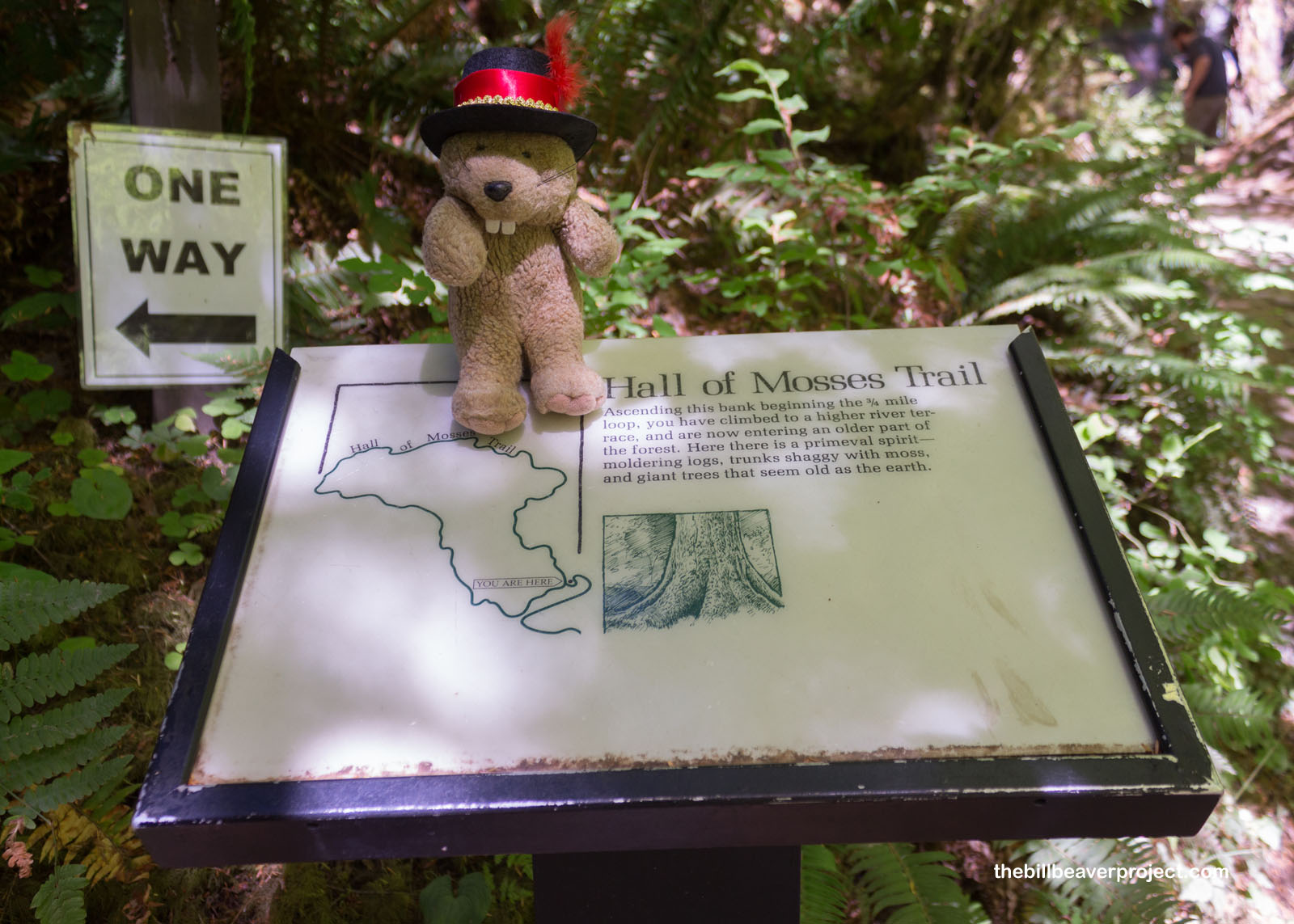 |
And luckily enough, there were plenty of mosses to spare, growing upon the towering cedar and maple trees! With well-marked paths along this easy loop trail, there was plenty of intact greenery to enjoy, including healthy ferns and just-past-season salmonberries, which I learned are now growing taller because elk no longer roam these meadows to prune them.
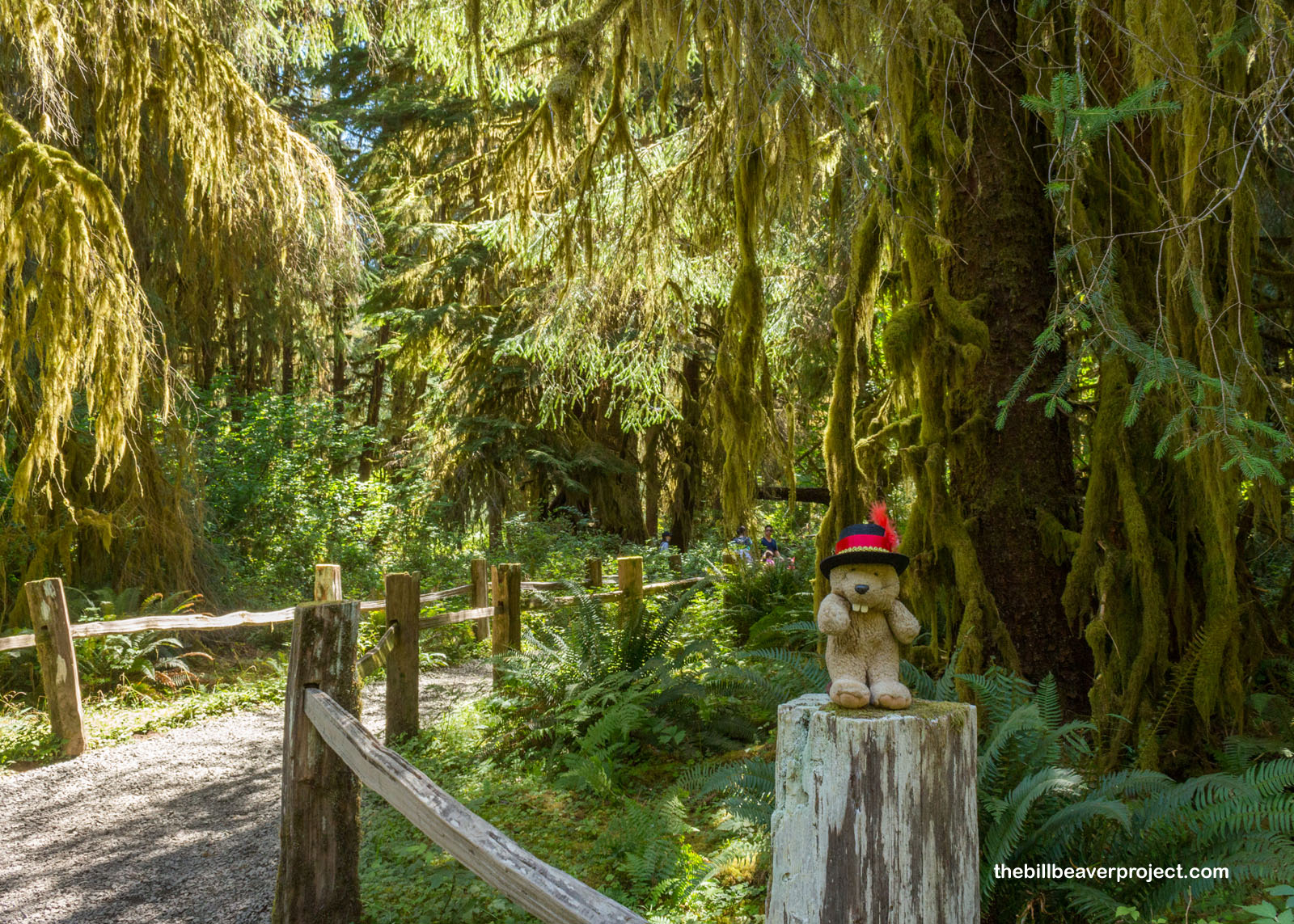 |
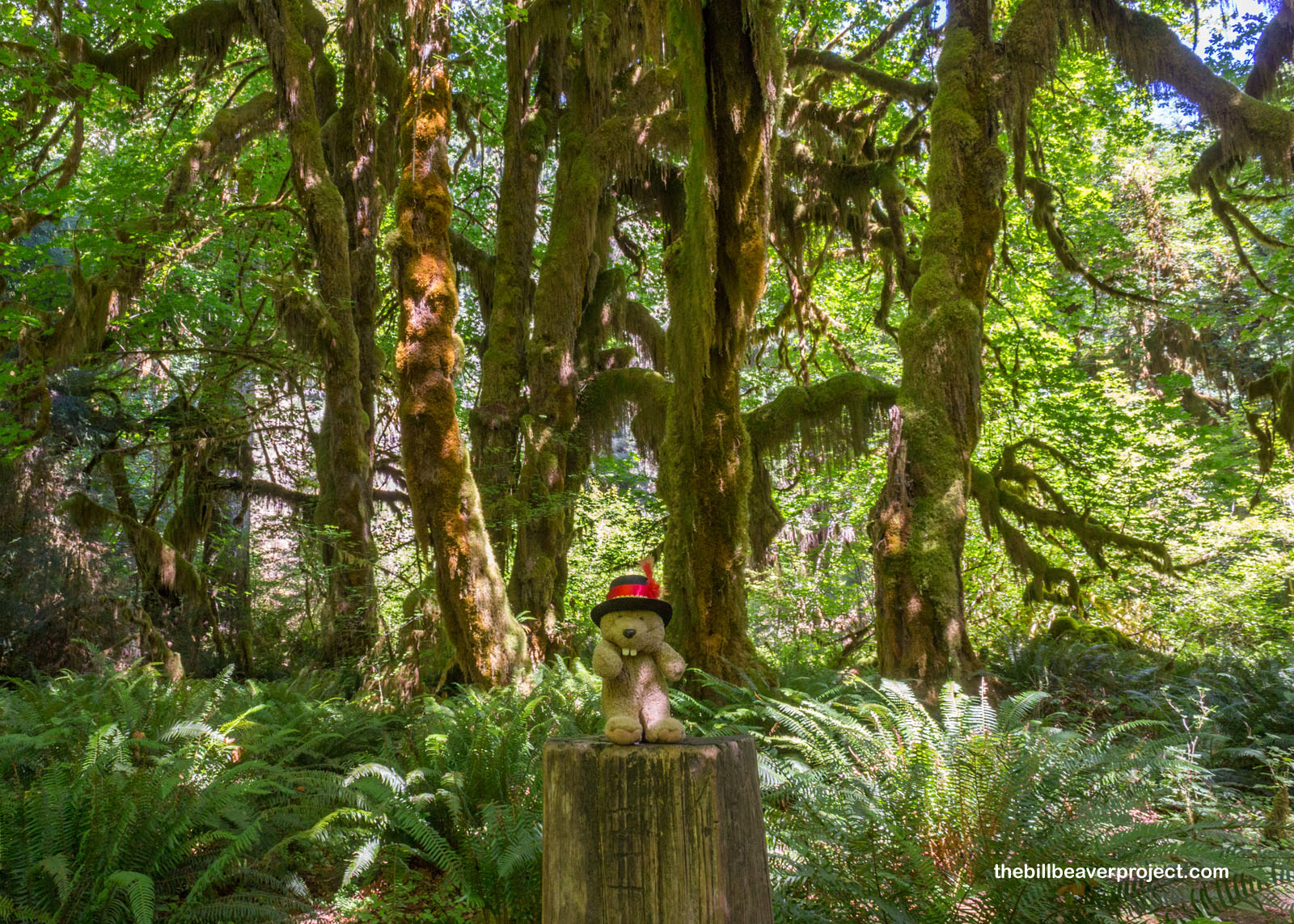 |
Nestled in the shadow of a fallen log, I found a relative of my sluggish friends, Mr. Foster and Ms. Maduro! Master Plantain the banana slug paused just long enough to say hello but claimed to be in a hurry and couldn’t chat. It was a little awkward, since his hurry kept him within chatting distance for ten minutes until I decided to move on, but I was glad to see the banana slugs are keeping busy in this dry, dry rainforest!
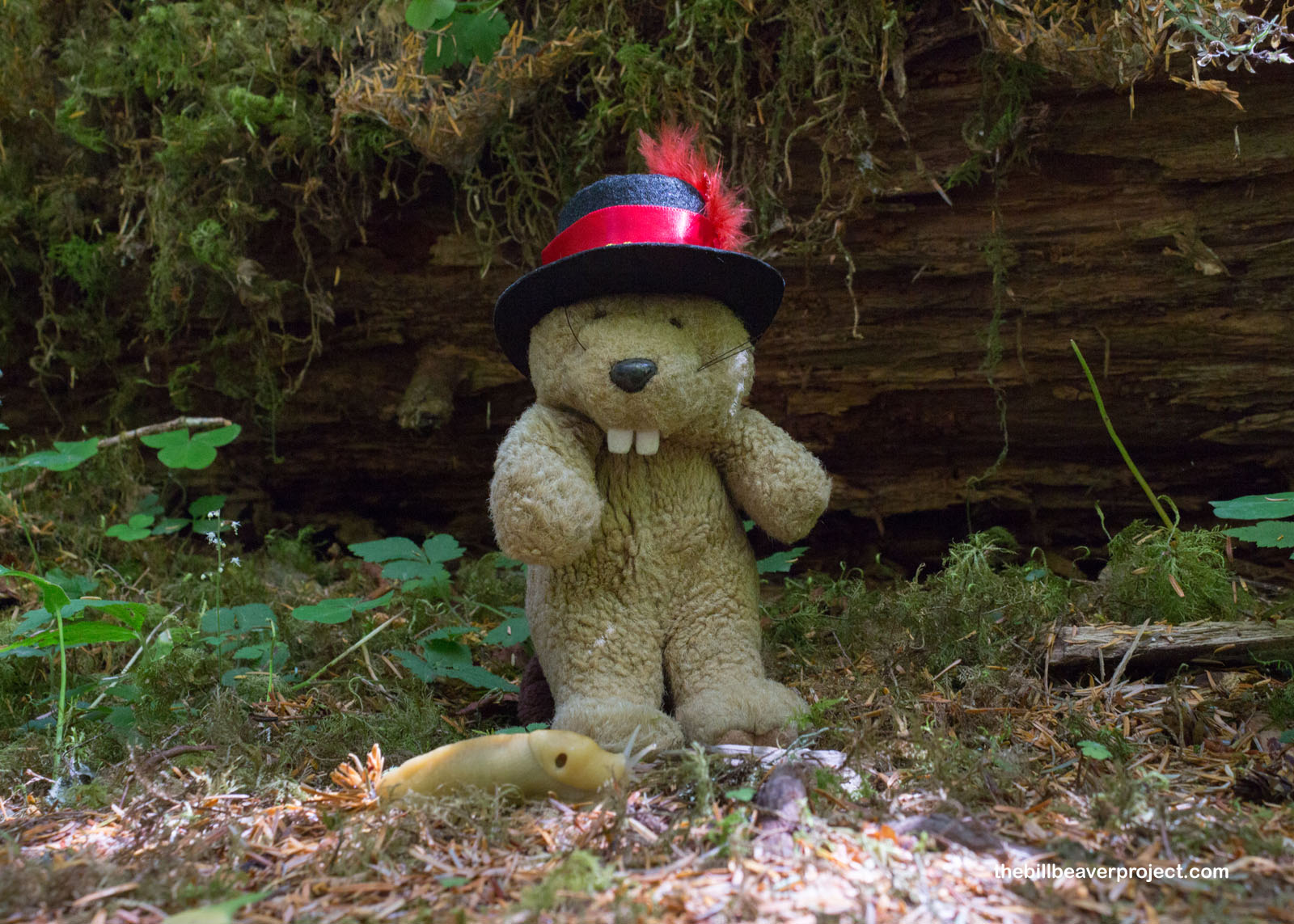 |
Even though the Hall of Mosses Trail was only 0.8 miles long, the crowds began to thin the further we went. This provided more opportunities to appreciate this lovely forest from a variety of angles!
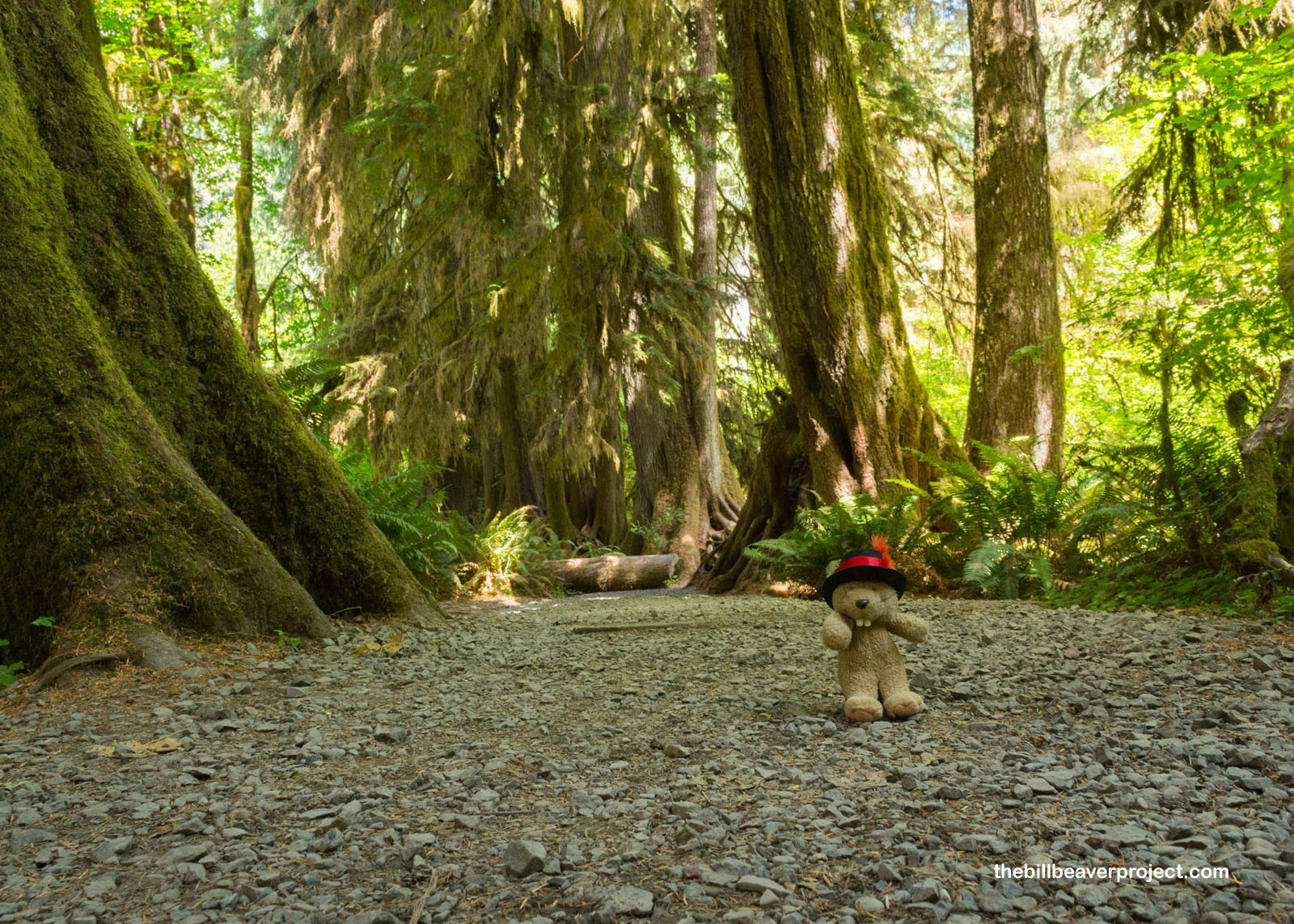 |
For example, do you know about nursery logs? Nursery logs are fallen trees that, as they decompose, become sources of nutrition for all kinds of plants from mosses to shamrocks to brand new trees! That’s why the fall of an old giant, while sad to watch, is critical for the overall health of the forest!
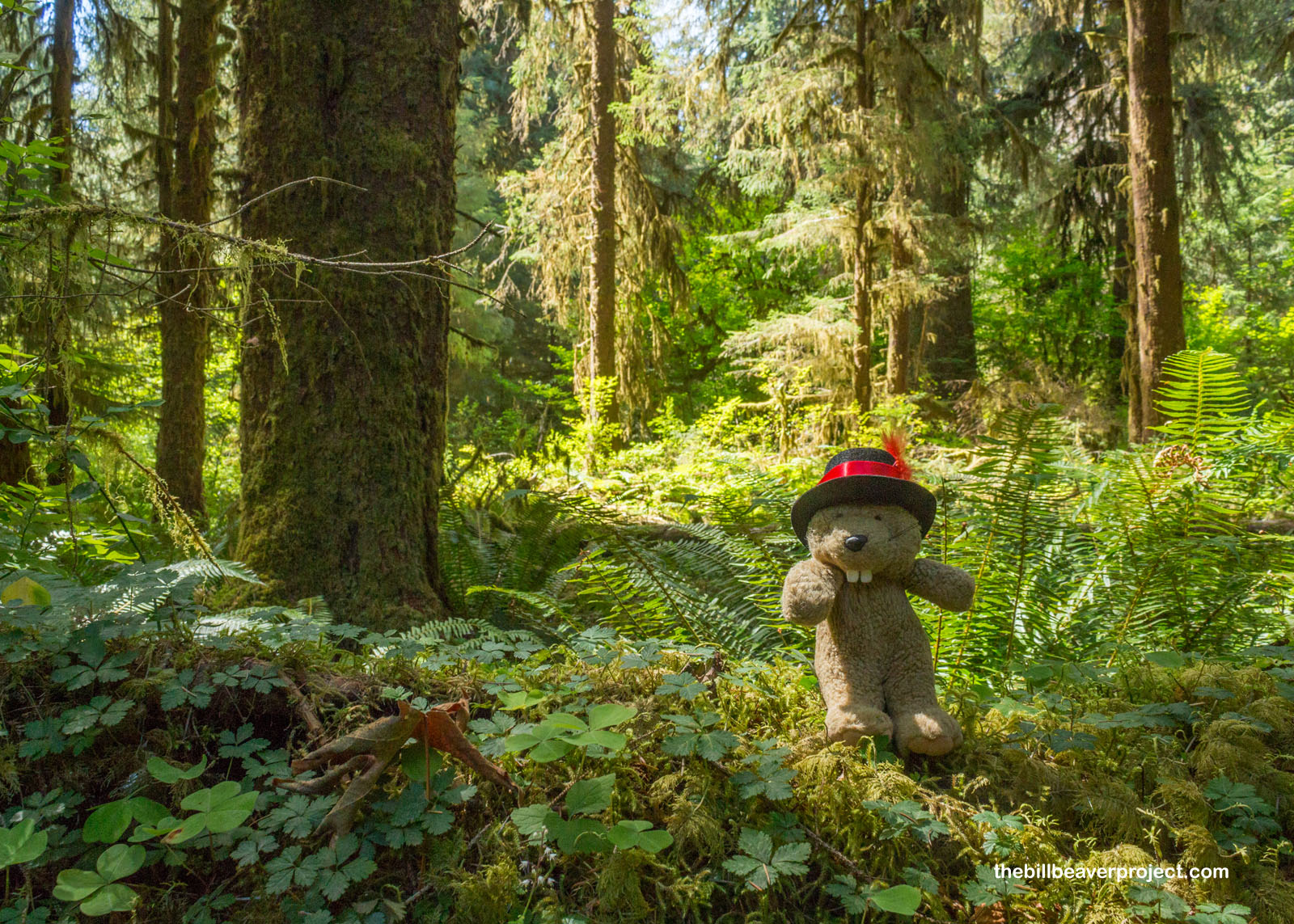 |
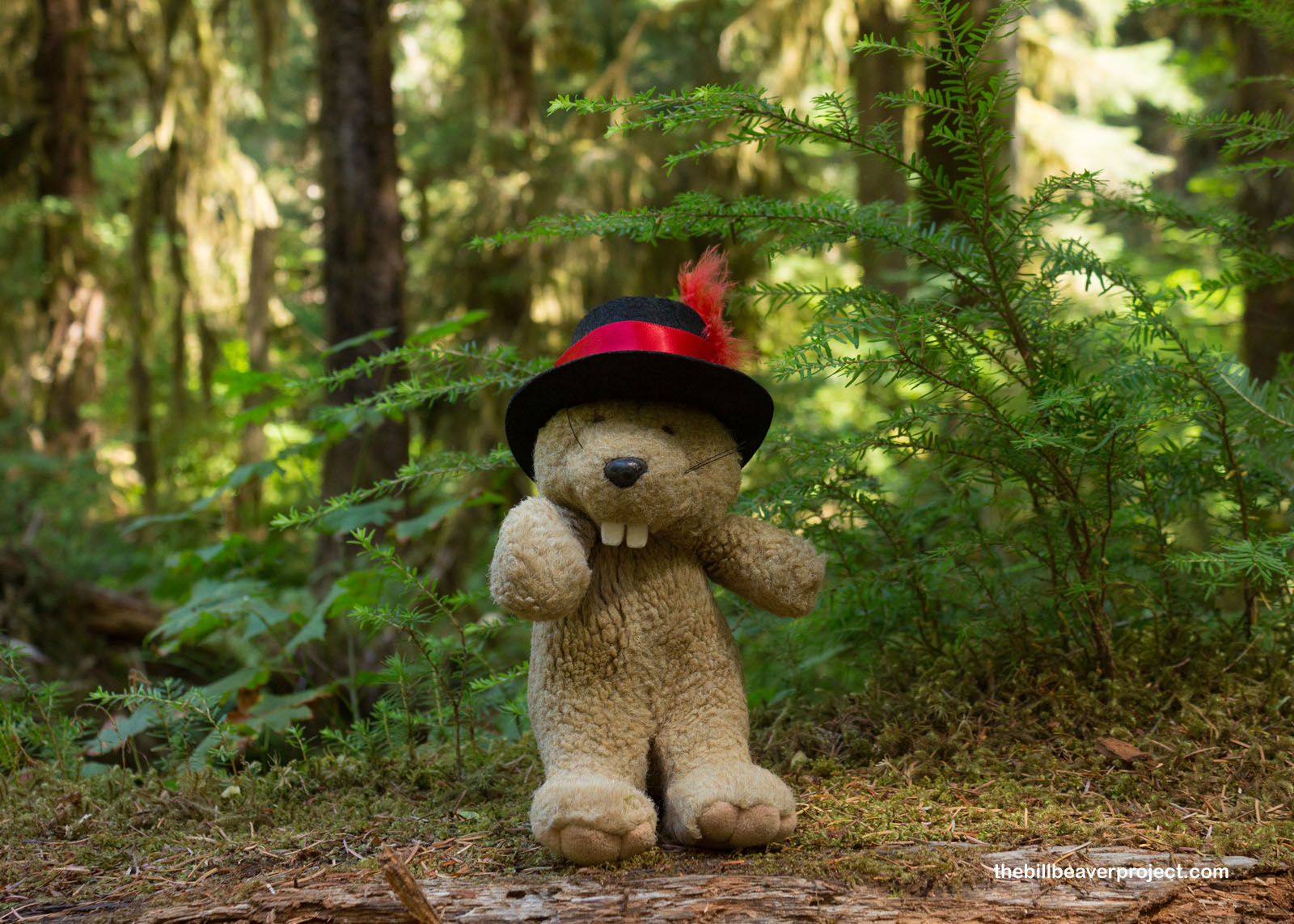 |
After completing our loop, Dan and I decided to extend our trek on the far less crowded (because it was longer) Spruce Nature Trail, which wove through a drier, but just as gentle, 1.2 miles in which conifers like, you guessed it, spruces, were dominant!
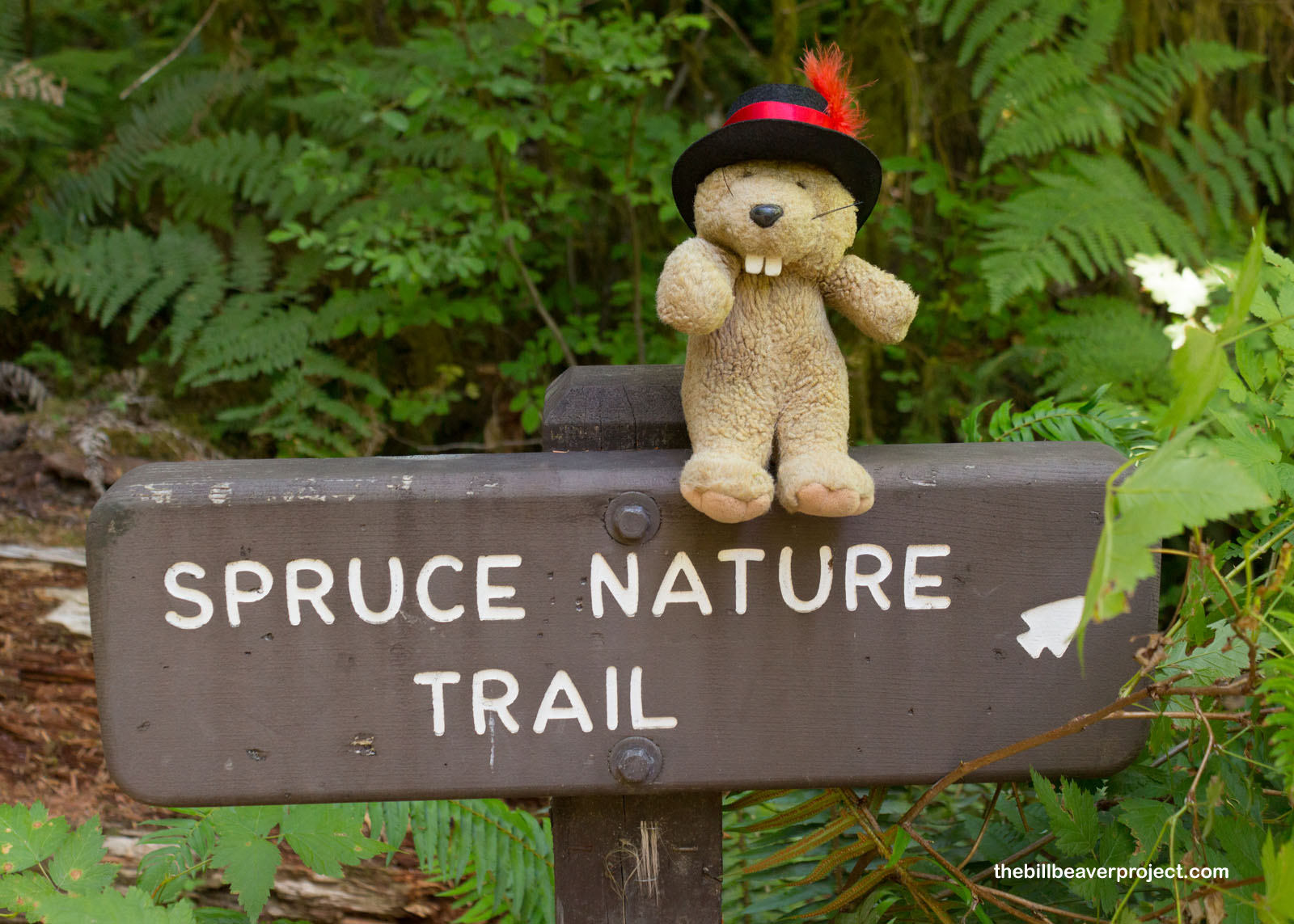 |
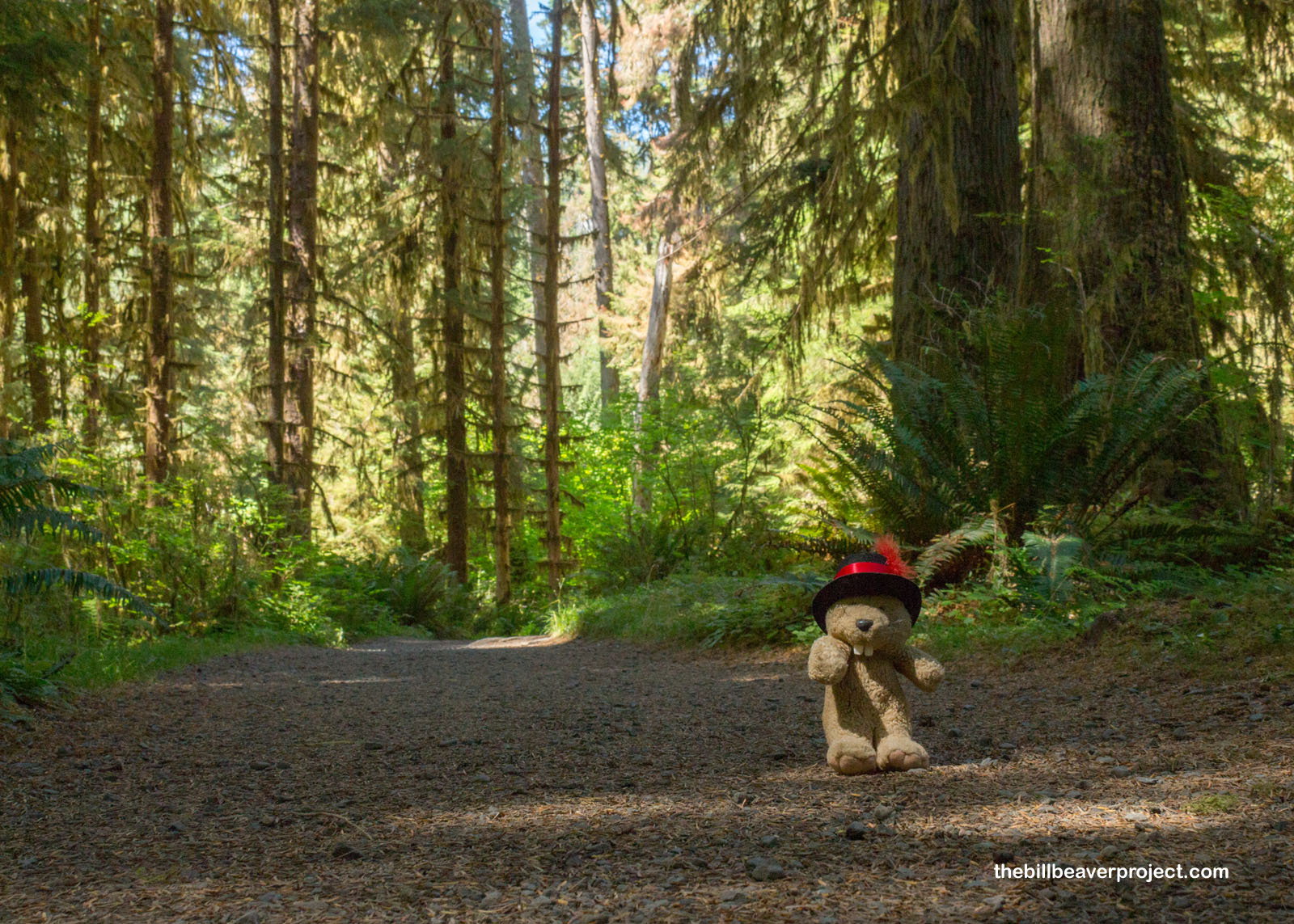 |
This loop took us to the clear Hoh River, a possible source of the “Hoh” name, since there’s a Quileute word, ohalet that means “snow water.” By clear, I mean the clearest water I’ve ever seen in my whole life! It was so clean and pure, I was afraid to touch it!
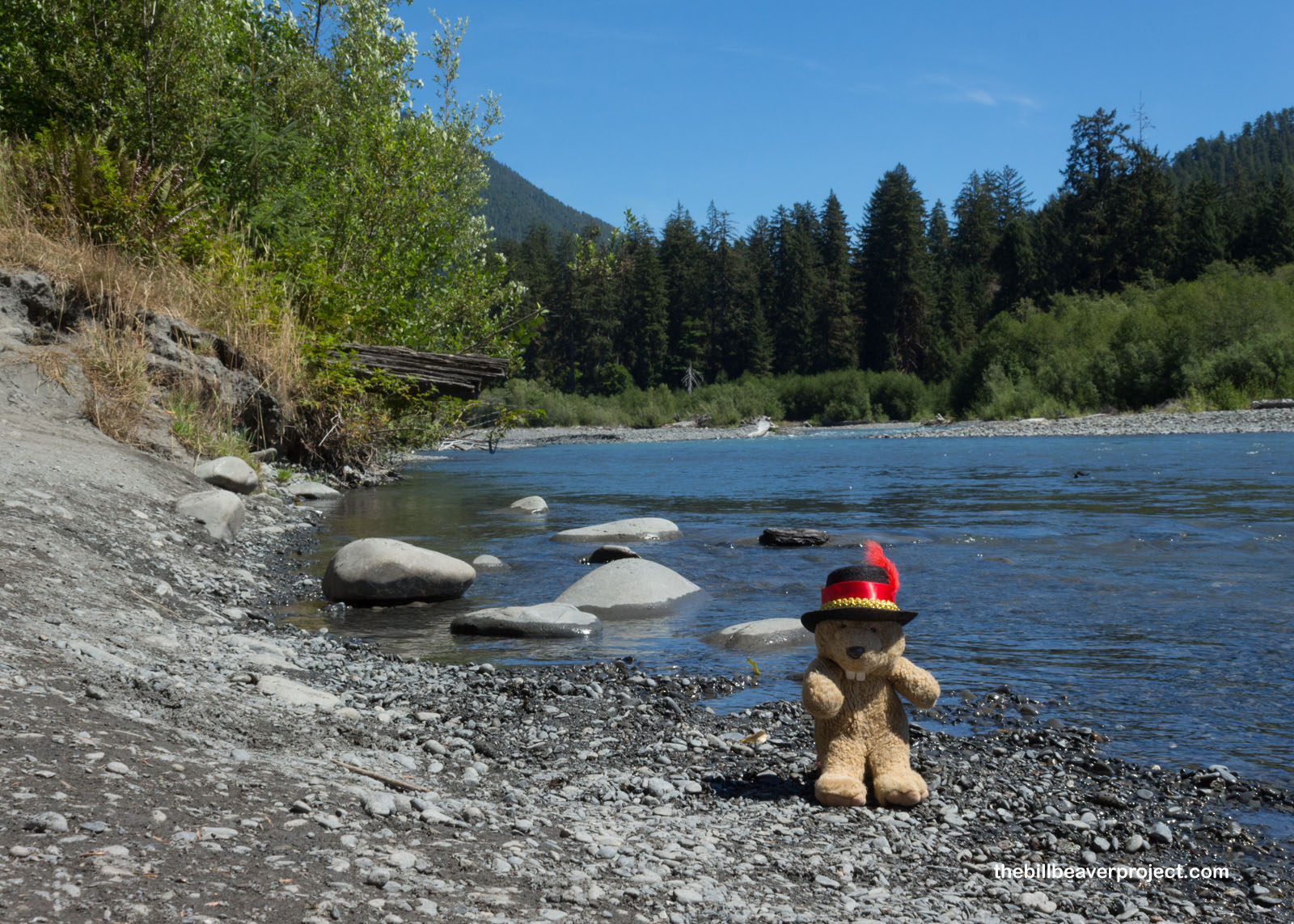 |
Ducking back into the trees, more maples joined the spruces for a lovely burst of greenery, plus a really neat tree trunk gateway!
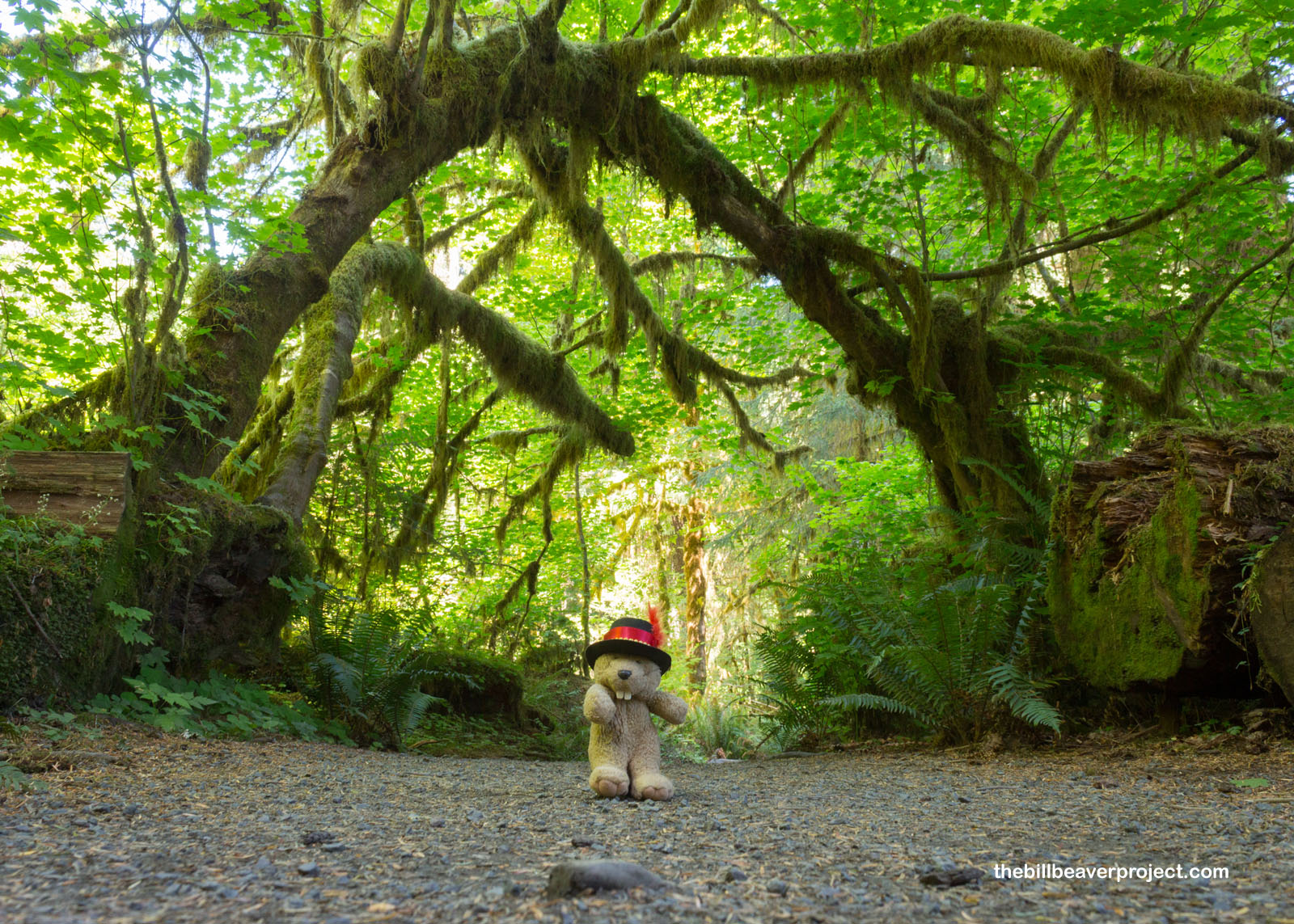 |
This led to the last, grand monument of the trail: a massive, toppled tree turned nursery log! I was reminded of the sticker-like trees that had peeled off the rocks in the Wind Rivers, but what was really neat about this fallen giant, beyond the cool textures, were the new trees sprouting so high up with their new roots interweaving with the old ones of their tree mother! What a find!
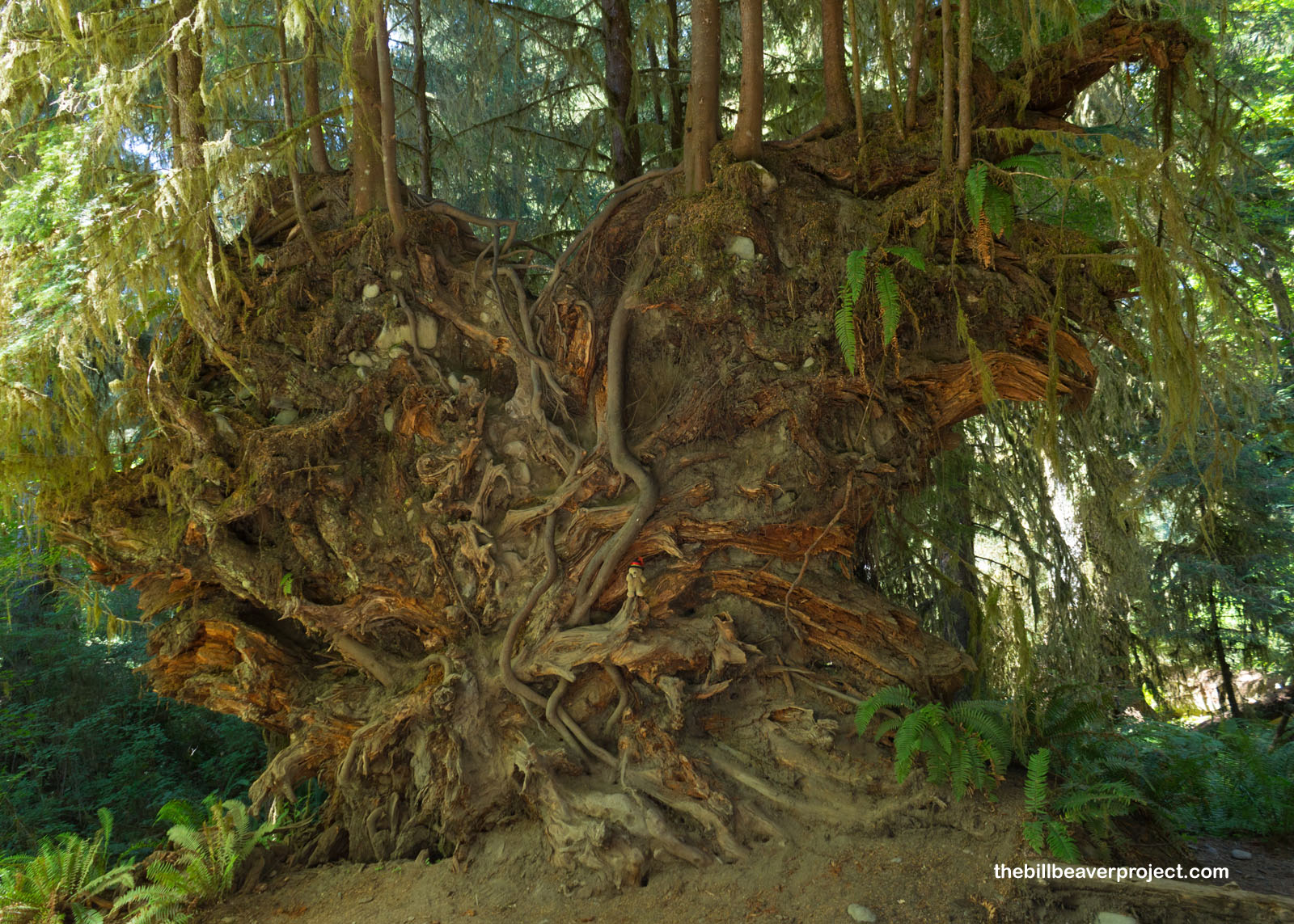 |
After reaching the end of the Spruce Nature Trail and grabbing some lunch at the hot and sunny Hard Rain Cafe, our journey continued to the next unit of Olympic National Park, part of its famous coastline and, if you’re a fan of the Twilight book series, just over the “No Vampires” treaty line. If you’re not a fan of the series, but want to know what actual treaty lines there are in this area, the next stop on this national park tour was the boundary of the Quileute Nation, who had to limit their ancestral lands in the Treaty of Olympia, signed January 6, 1856.
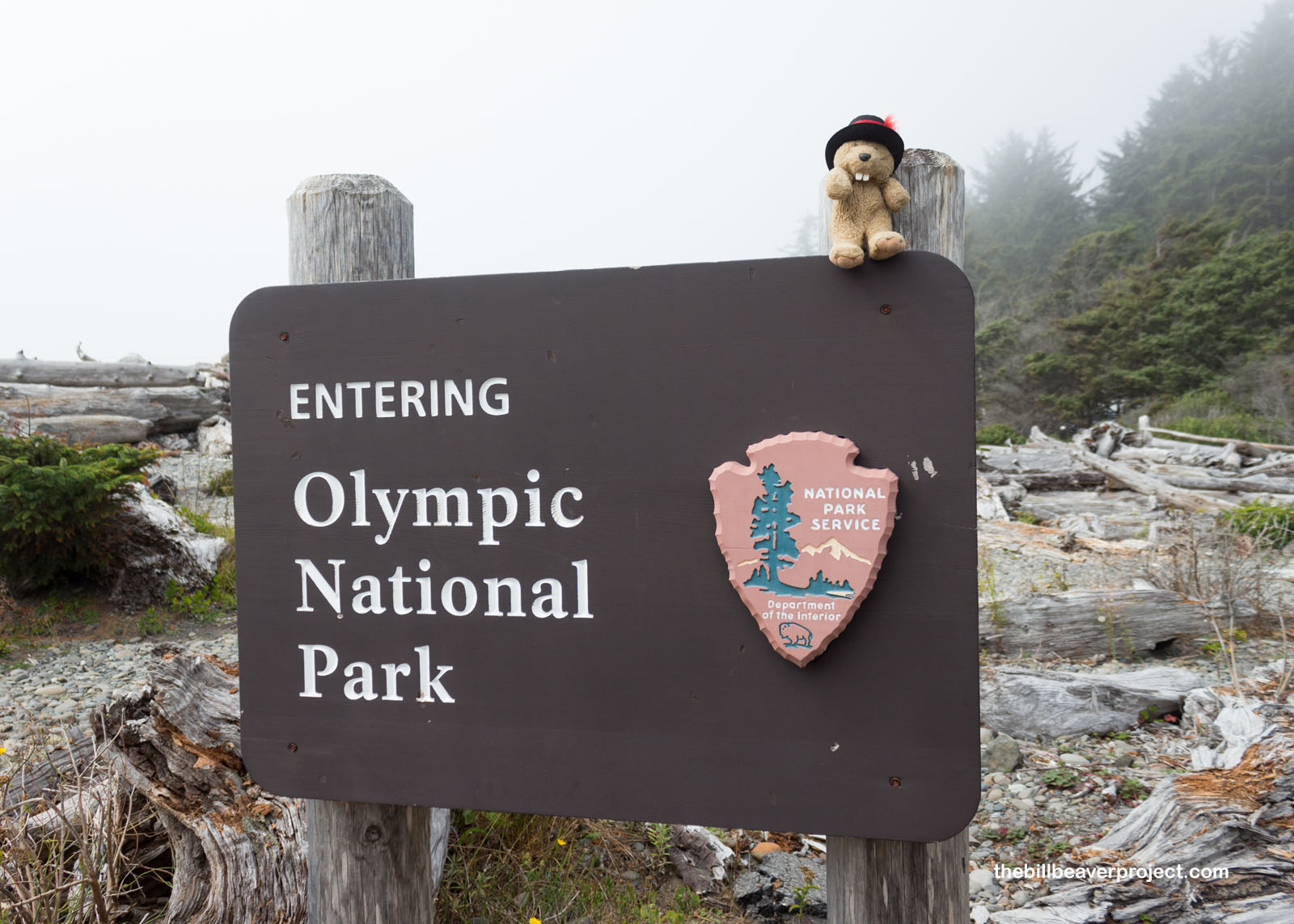 |
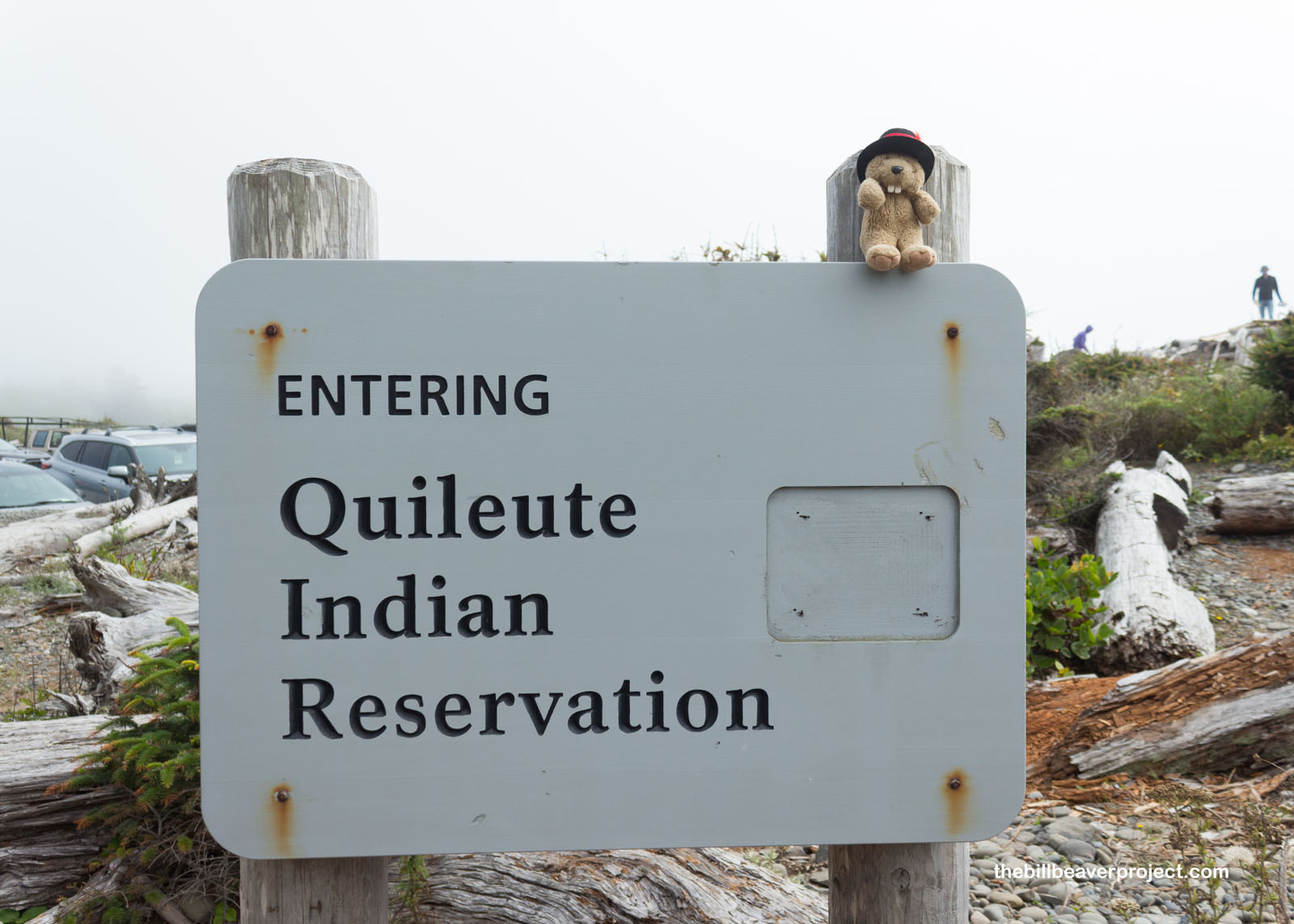 |
North of the boundary is Olympic National Park’s famous Rialto Beach, which did not get its name from the Quileute but a magician named Claude Alexander Conlin, who lived in the nearby settlement of Mora and named the beach after a chain of theaters.
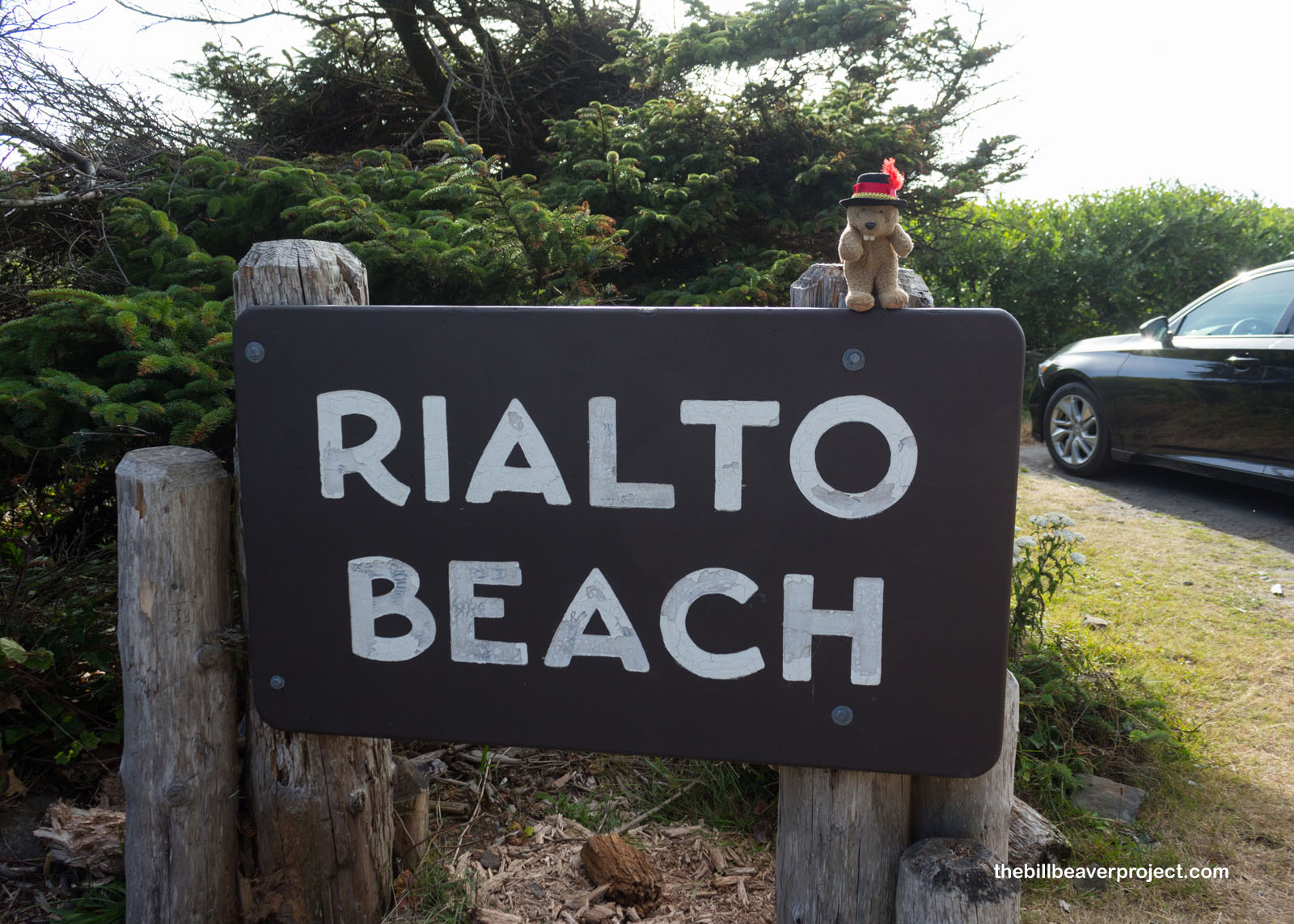 |
It was super foggy here at Rialto Beach, which really set the mood for its famous tree graveyard, where the tides had collected old fallen trunks and salted them to the point that they skeletonized, rather than became nursery logs. The mood itself was eerie and neat, but I was really hoping to see the seastacks that make this beach so famous! So, I began my trek.
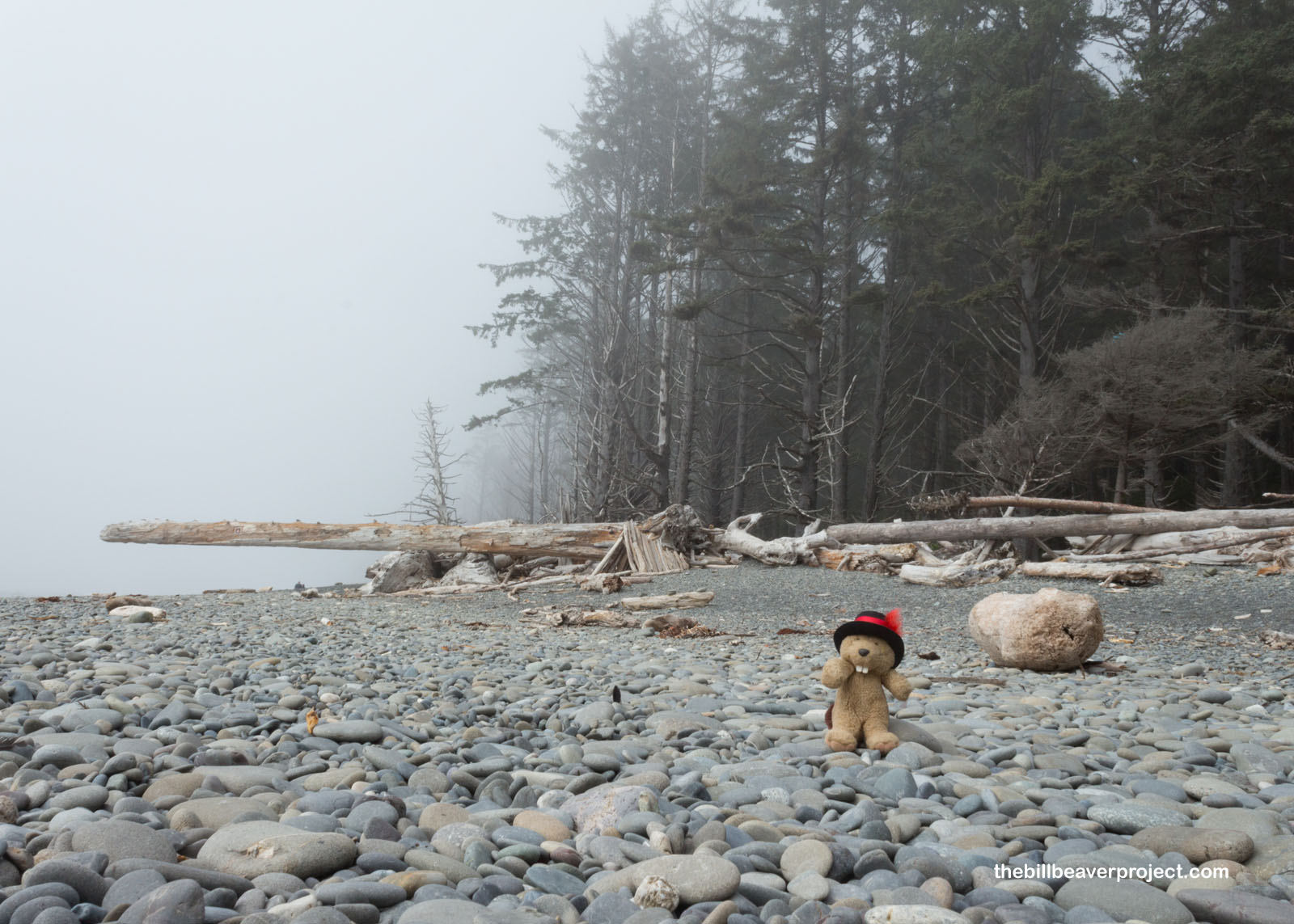 |
After picking my way across a mile and a half of rocky beach, something miraculous happened! The fog started to clear, and off in the distance, I saw the famous, unnamed pair of seastacks, emerging like ghost ships from the mist! On top of them, some hardy trees had taken root and formed the crew of each ship!
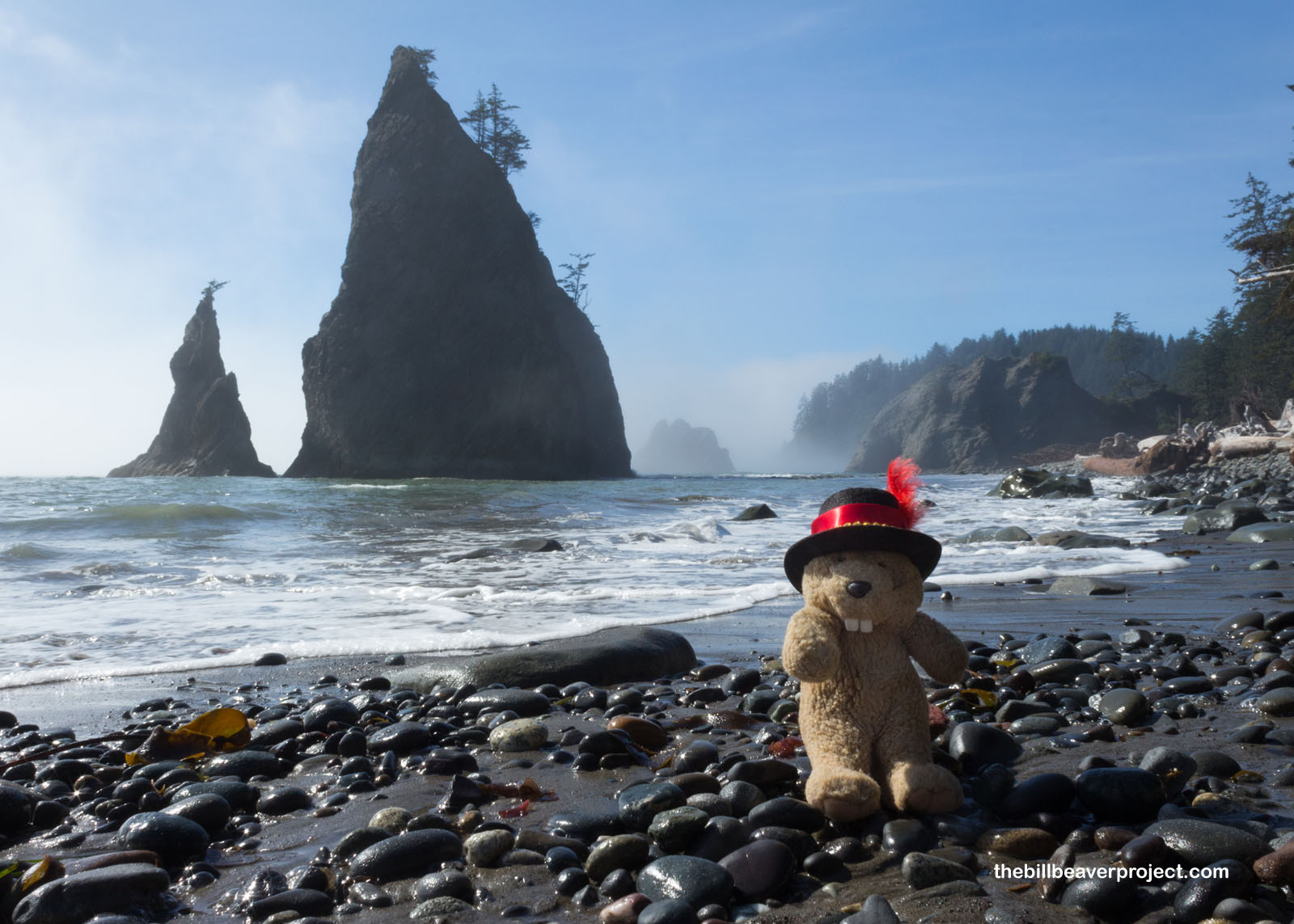 |
 |
Never being one to settle for one view, and knowing there was still a famous viewpoint ahead called Hole-in-the-Wall, I climbed over a fern- and salal-covered cliff (sampling a few salal berries, which taste like blueberries) and descended to the tide pools below.
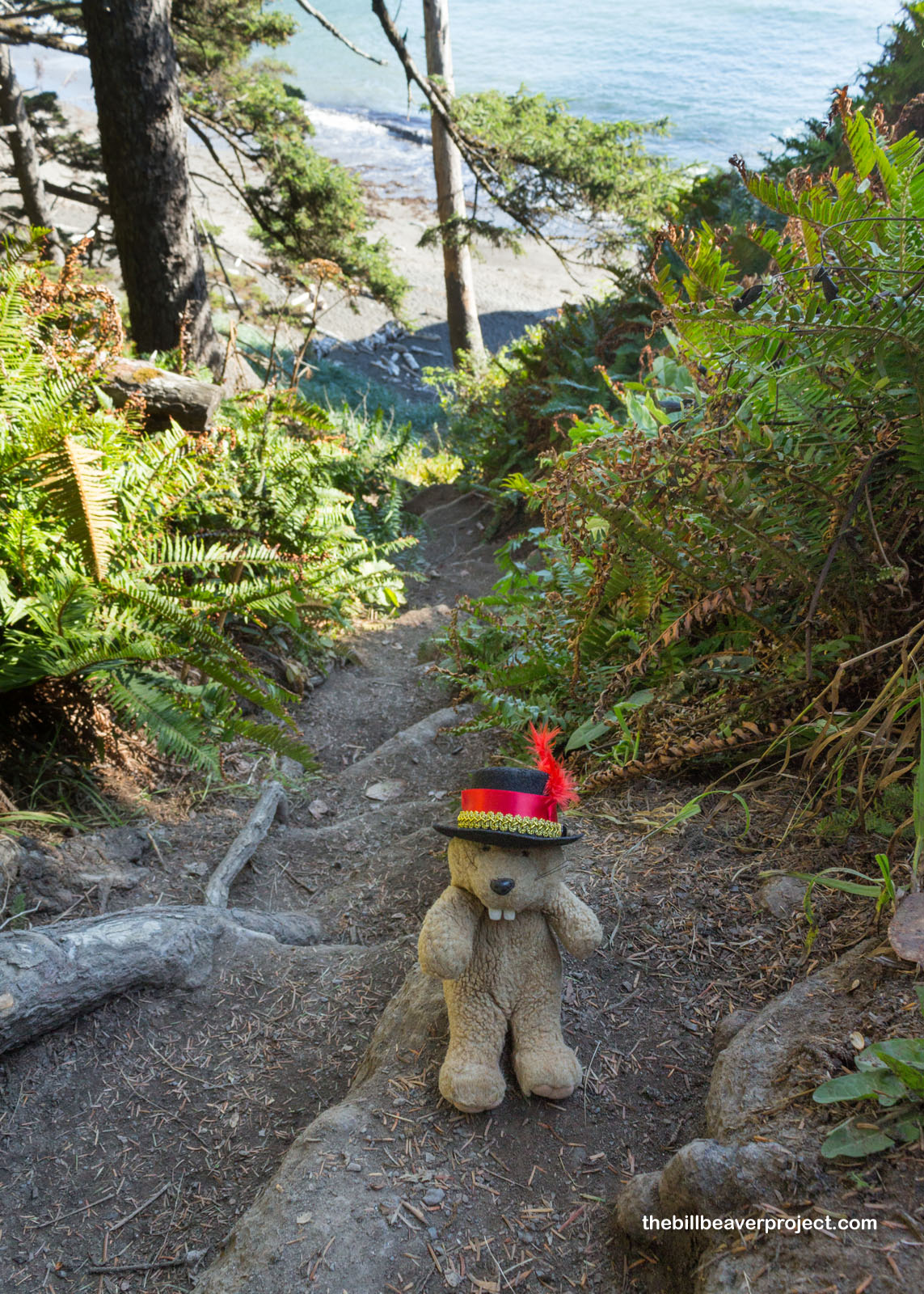 |
That’s where I was able to get a swell glimpse of the seastacks through the famous Hole-in-the-Wall! When the tide is low, it’s possible to walk right through the hole, but that was not going to be a good idea today. Instead, I enjoyed the view of the blue, took a peak at some tidepool residents, and returned back down the beach as fog, once again, swallowed this magnificent place!
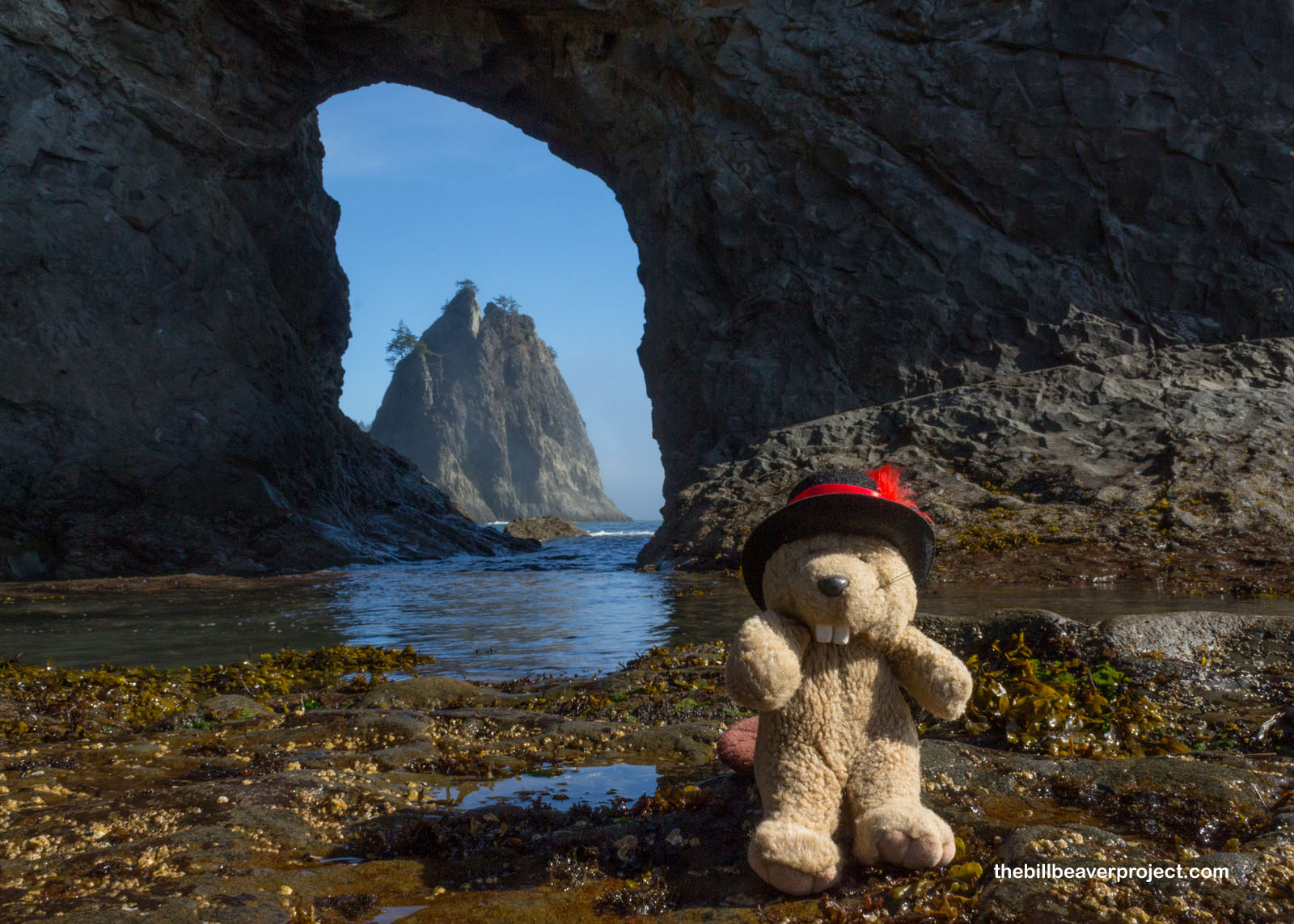 |
The next morning, Dan and I paid a brief visit to the high-mountain part of Olympic National Park, Hurricane Ridge! With our flight home scheduled for later in the afternoon, we wouldn’t be able to do much but enjoy the views of the distant Olympic Mountain Range and take a short nature hike.
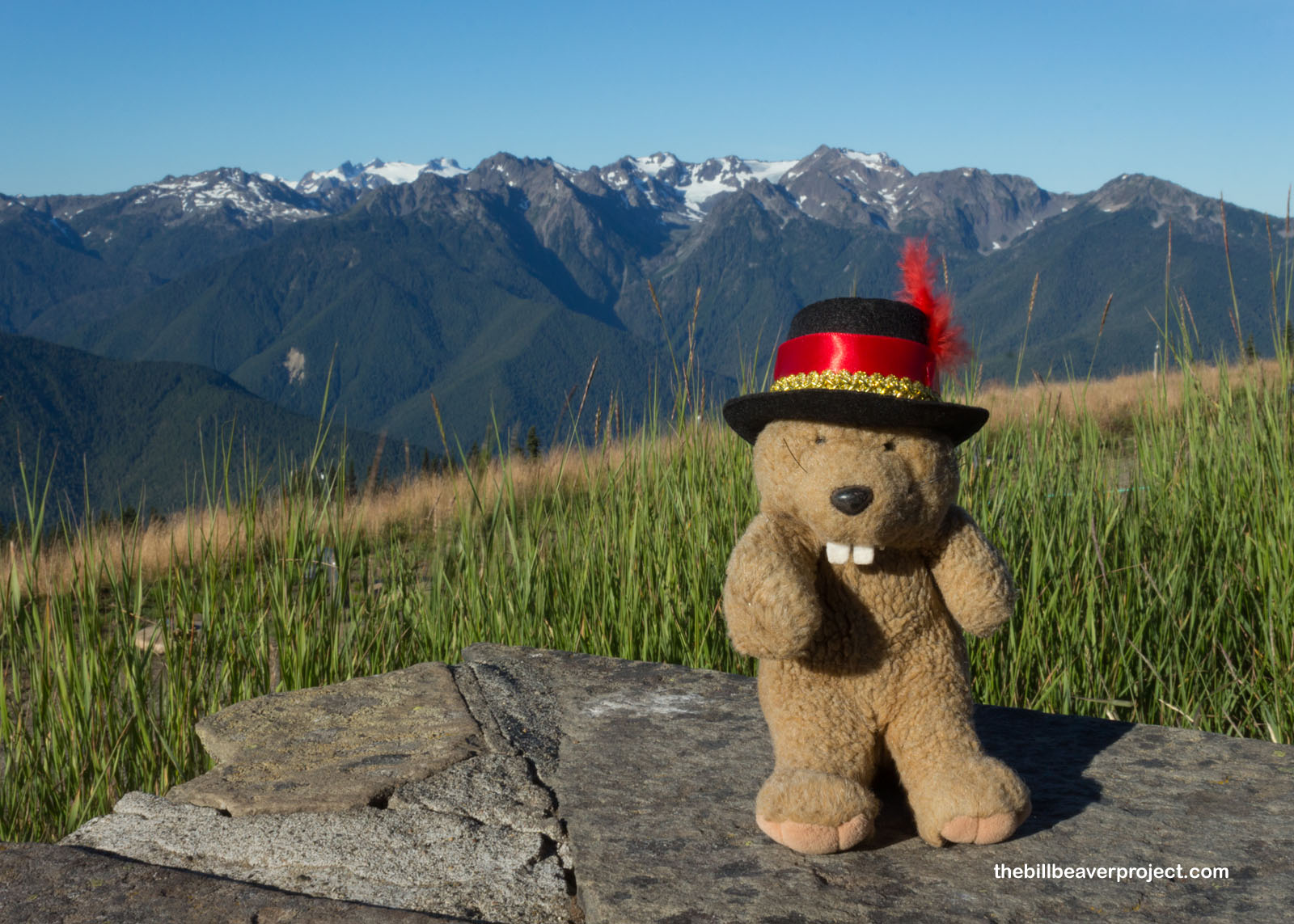 |
From atop Hurricane Ridge, we were able to see all the way to Victoria in Canada, whose border just opened yesterday after being closed since last year because of COVID-19. That reopened border may save the struggling town of Port Angeles, which, as a port, relies so heavily on boat traffic between the two countries! The view also gave a unique glimpse of the effects of climate change, as historic photos showed the climb of forests to higher altitudes where forests previously didn’t flourish.
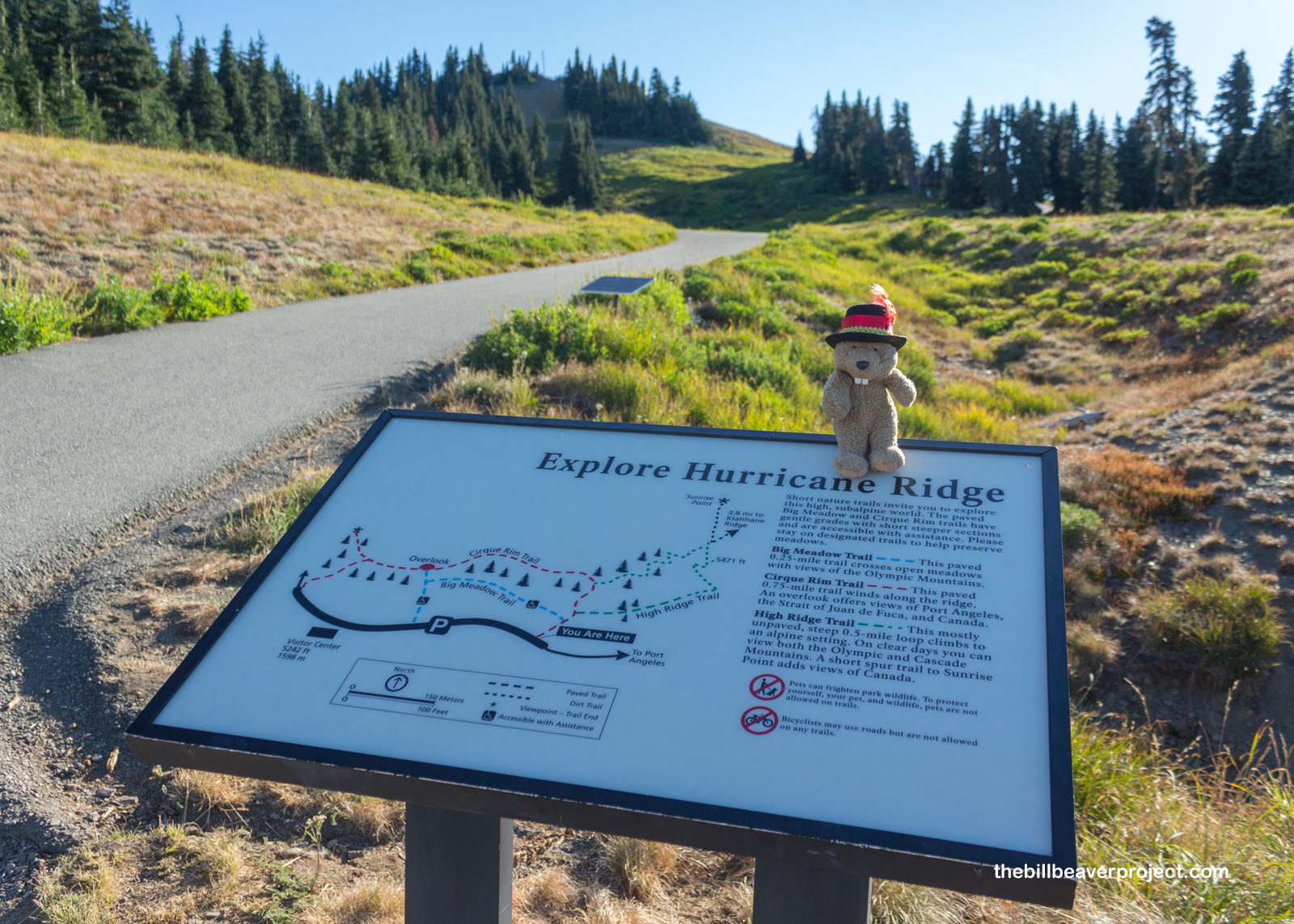 |
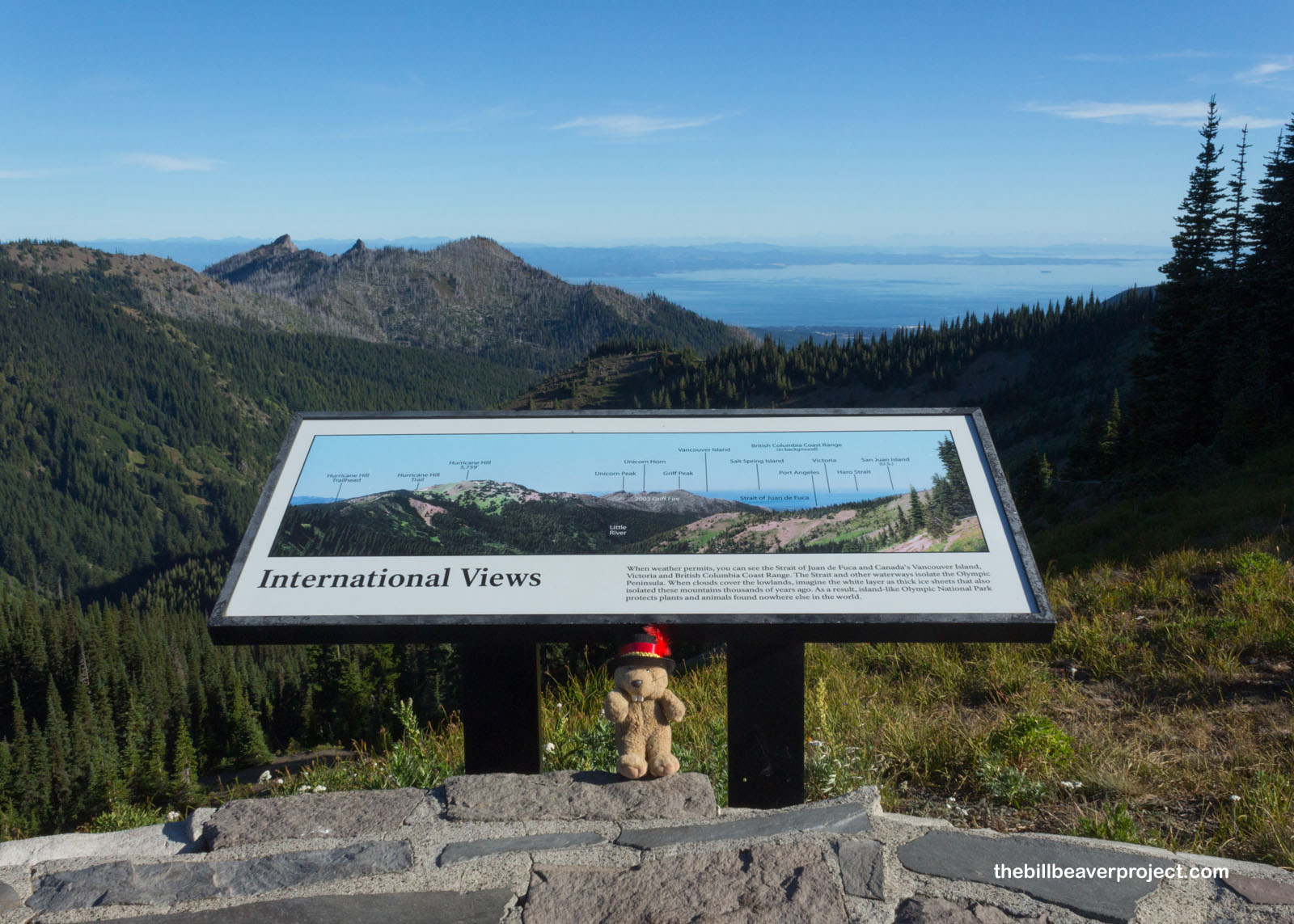 |
Between tidepool-cooking heatwaves and drought, the Olympic Peninsula is due for some major changes, maybe within our lifetimes! I sure was glad to have visited when we did. I also wouldn’t mind making the trip back here some day. Like many national parks, this brief visit only scratched the surface of all the neat things to see and do, but time, as any Olympic sprinter knows, is always ticking!
See you at the finish line!

 More 2021 Adventures |
Total Ground Covered: 201.0 mi (323.5 km) |
 More 2021 Adventures |
